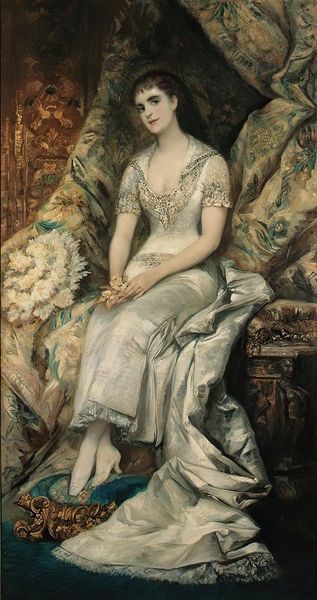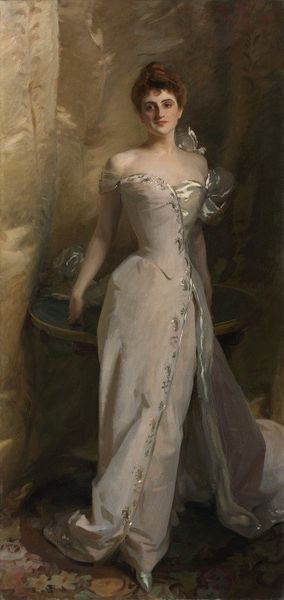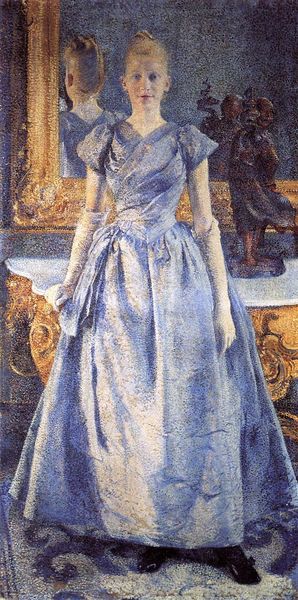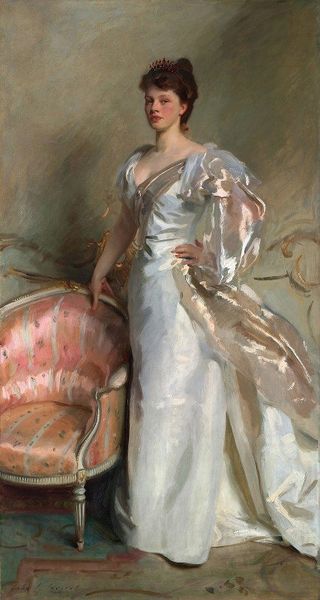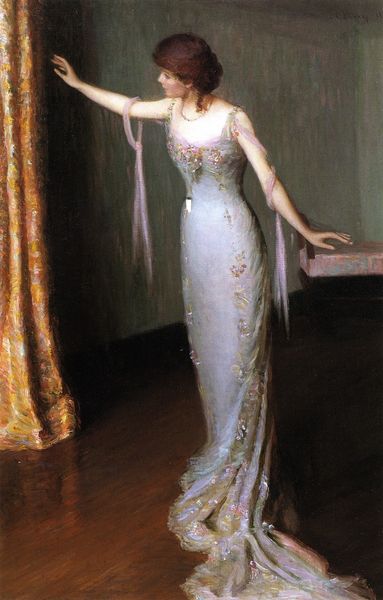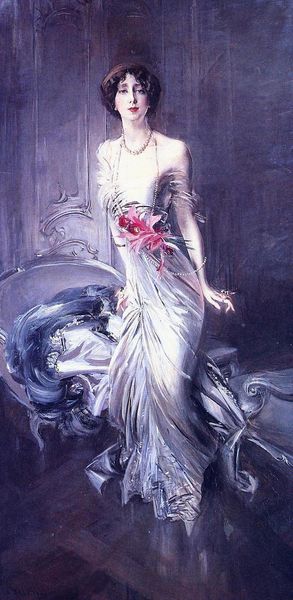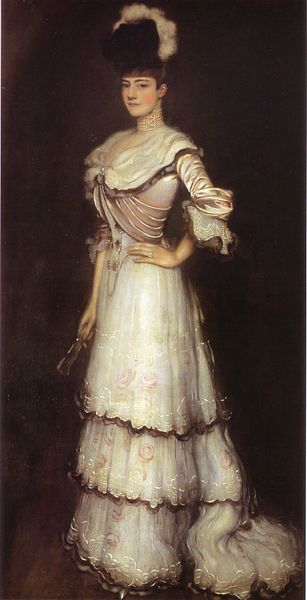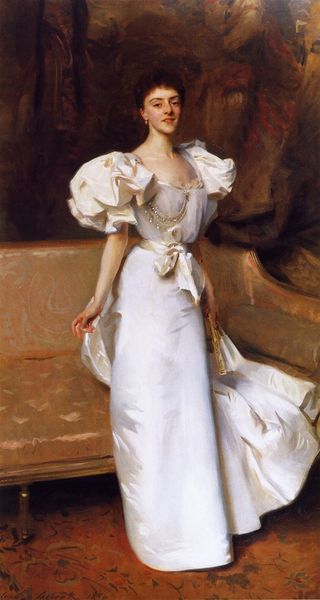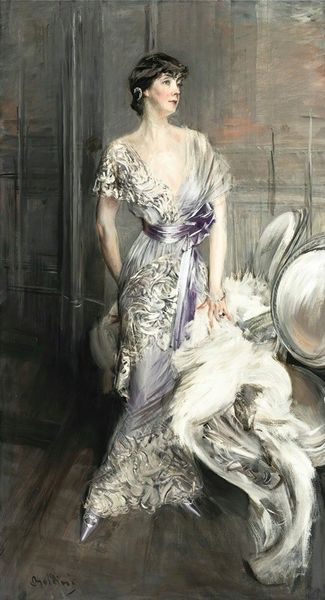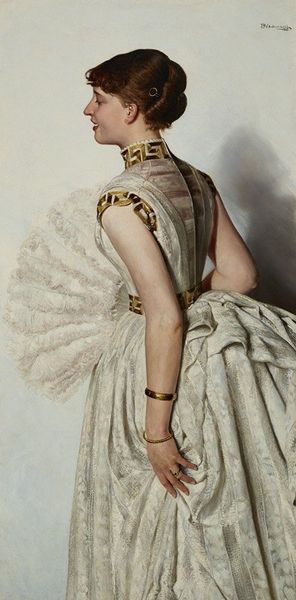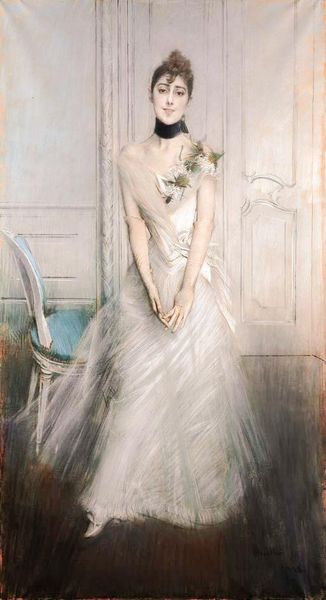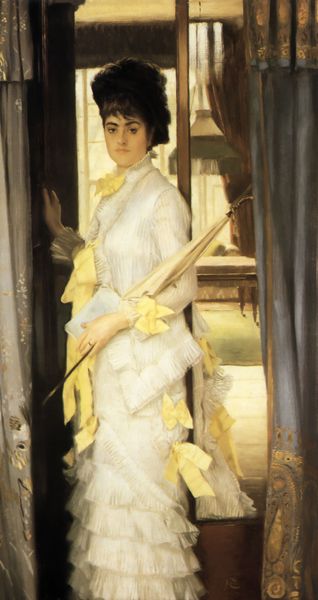
painting, oil-paint
#
portrait
#
gouache
#
figurative
#
painting
#
impressionism
#
oil-paint
#
figuration
#
oil painting
#
genre-painting
#
academic-art
#
realism
Copyright: Public Domain: Artvee
Curator: Looking at Alfred Stevens’ "Winter" from 1877, it offers a glimpse into the world of late 19th-century elegance. Editor: Ooh, a little frost fairy getting ready for the ball, I see. Everything is draped in icy whites and blues – even the light seems hushed and shimmering. Curator: Indeed. Stevens was known for his genre paintings depicting fashionable women in domestic settings. He had an understanding of the socio-political context of women in this time. We can notice the symbolism of the mirror as an object of bourgeois narcissism in his work. Editor: Narcissism, perhaps, or just plain old pre-party jitters. Look at how he’s captured the subtle tension in her pose. One hand on her hair, the other clutching her dress...that's not a confident woman, that's a hopeful one. There is something very personal about this, like she knows exactly who is at the ball tonight, someone special. Curator: You read that inner-narrative very clearly. It's key to remember Stevens' place within the artistic and social conventions of his era. Her attire, those cascading ruffles and jewelry, denote a certain level of class. And her positioning in relation to the mirror plays to prevailing notions of female beauty as a social construct. Editor: Social construct or not, she's hoping to catch someone's eye! And the muted tones help focus your gaze – a soft stage spotlight effect, almost theatrical, which may speak for Stevens own interest in stage decor. She looks like she is the protagonist. Curator: And, of course, it would be remisiss not to see that "Winter" functions as a piece of social commentary about the era and about femininity within certain classes. We might debate as to whether the picture reveals feminist intention but this only complicates a discussion that is much needed to tackle misogyny across institutions. Editor: Well, I will stick with my own point and keep things a little lighter. It is so very interesting to find such intimacy and excitement on display through simple observation. Makes you wonder what the artist knew, or hoped. Curator: Indeed, seeing how art echoes cultural debates makes observing easier to understand as part of society as a whole. Editor: And just for once, art simply mirrors the simple beauty of expectation.
Comments
No comments
Be the first to comment and join the conversation on the ultimate creative platform.

